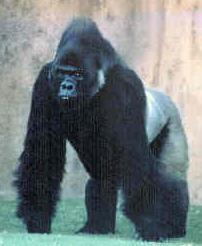Facts About Eastern lowland gorilla
The Eastern Lowland Gorilla, also known as Grauer's Gorilla, is a captivating subspecies of the eastern gorilla that inhabits the dense, mountainous forests of the eastern Democratic Republic of the Congo. Distinguished as the largest gorilla subspecies, adult males can weigh up to approximately 210 kilograms (around 463 pounds), while females typically weigh about 100 kilograms (approximately 220 pounds). These gorillas exhibit remarkable adaptability in their habitat preferences, thriving in mountainous regions, transitional areas, and lowland tropical forests.
Eastern Lowland Gorillas are highly social animals, living in groups led by a dominant male, commonly referred to as a silverback. Their diet primarily consists of plant materials, including fruits, leaves, stems, and bark, but they also occasionally consume insects such as ants and termites.
Regrettably, these majestic creatures face significant threats. Poaching for bushmeat, civil unrest, and habitat destruction due to logging, mining, and agricultural activities severely endanger their survival.
In response, conservationists have initiated various measures to protect these gorillas. Park rangers play an essential role in shielding them from illegal hunting and habitat destruction. However, genetic studies have uncovered a worrisome lack of genetic diversity within the Eastern Lowland Gorilla population, which could hinder their ability to adapt to environmental changes.
To address these challenges, conservation strategies might include captive breeding programs or even relocating individuals between different subgroups to increase genetic diversity. By implementing these measures, we can help ensure the future survival of this remarkable species.

 Burundi
Burundi